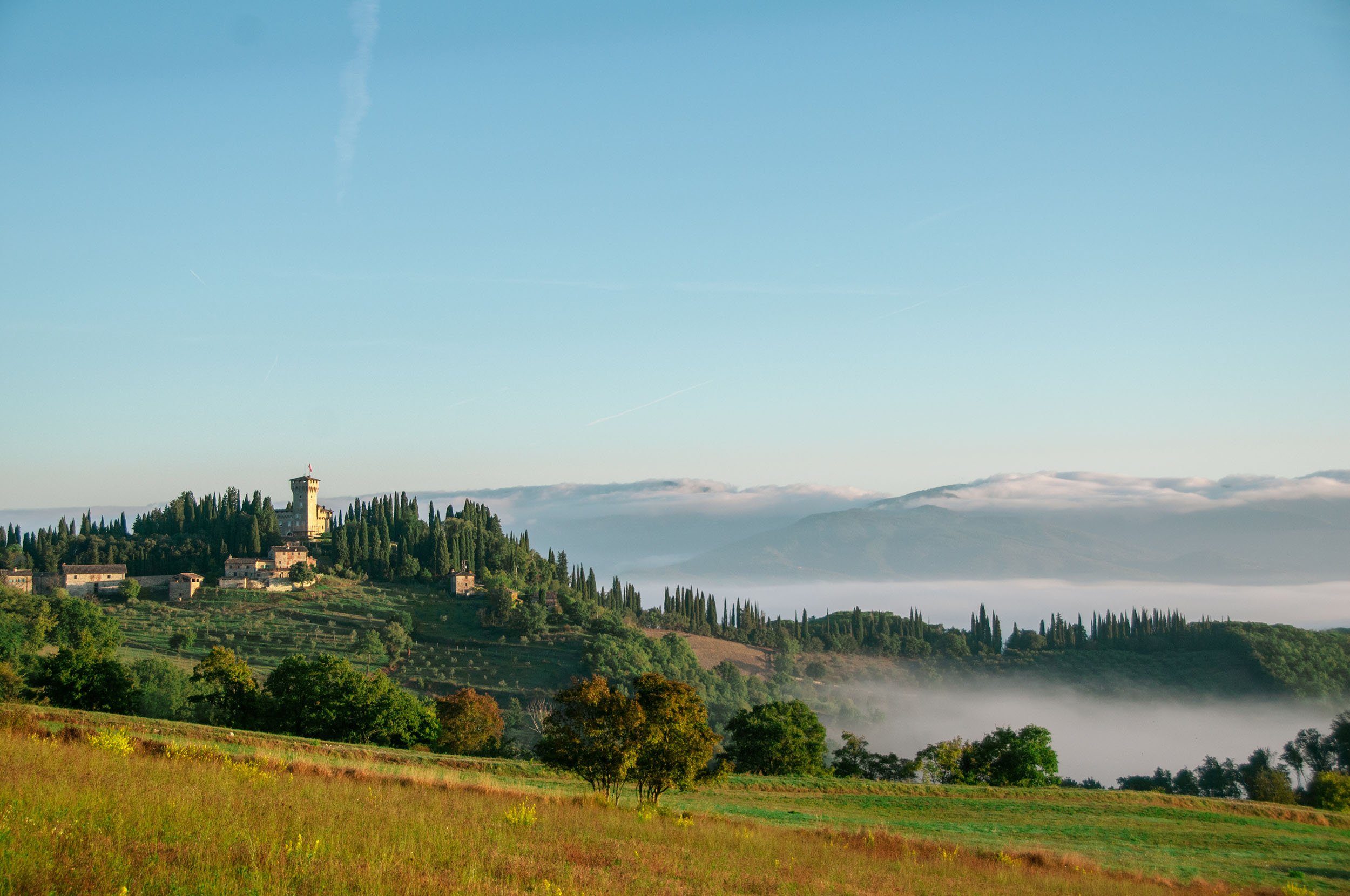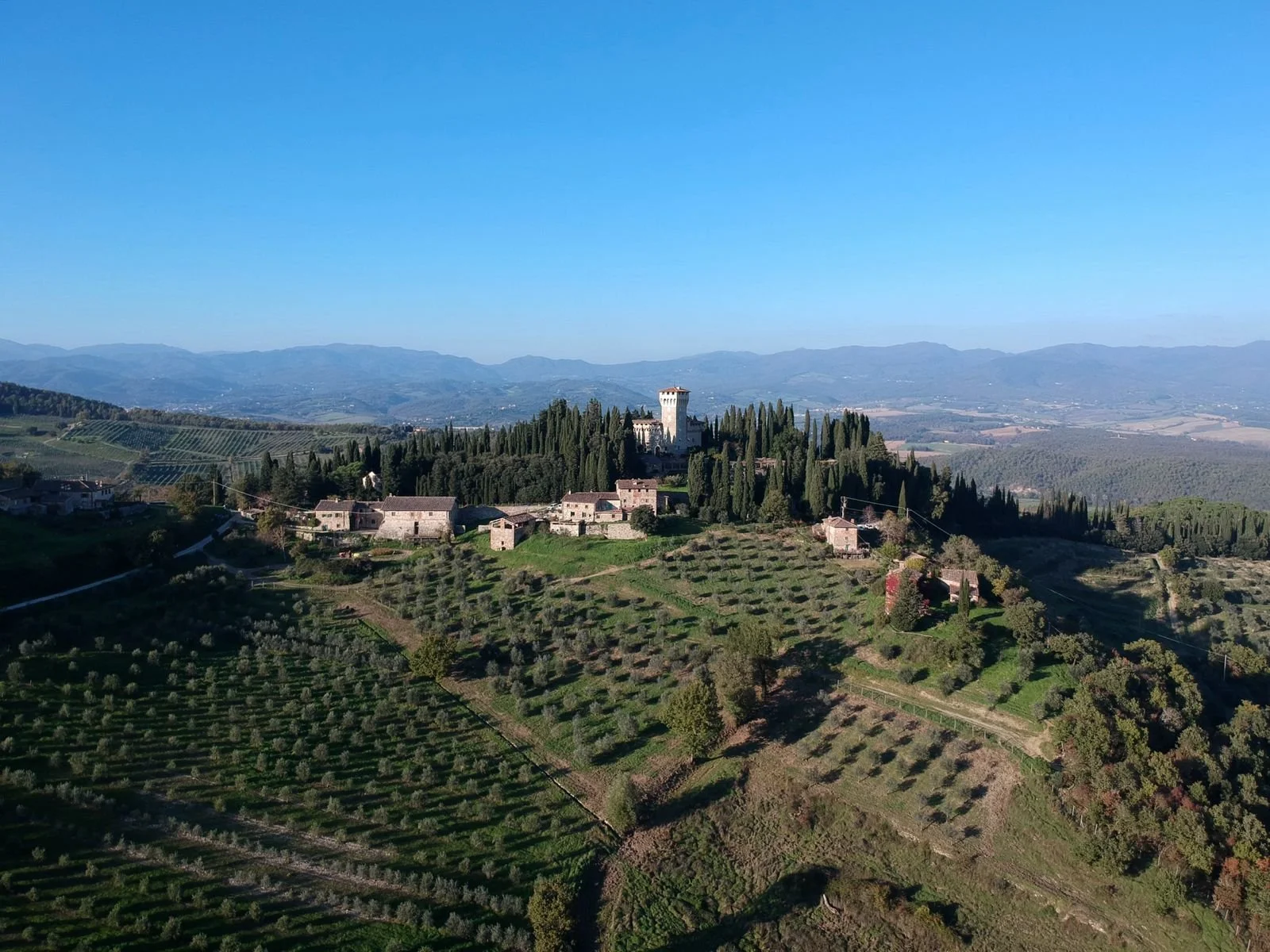
THE REBIRTH OF A TIMELESS TERROIR.
A BRIEF HISTORY OF TREBBIO*
*The name Trebbio comes from the Latin word trivium, which refers to the intersection of the three ancient roads that cross the estate.
With its origins tracing back to ancient roads that once connected civilisations, Trebbio became a stronghold, a noble residence, and a sanctuary for art, philosophy, and innovation. The echoes of its past are found in the Renaissance architecture of Michelozzo, in the quiet reflections of Cosimo de’ Medici, and even in the footsteps of Amerigo Vespucci, who once walked its grounds.
Nestled in the heart of Mugello, Trebbio is more than just a place—it is a testament to centuries of history, resilience, and transformation. From its earliest days as an Etruscan settlement to its strategic role in medieval Tuscany, Trebbio has stood at the crossroads of time, witnessing the rise of empires, the ambitions of the Medici, and the evolution of a timeless landscape.
Replica of a portrait of Cosimo I de' Medici in armour, by Angelo Bronzino (1503–1572)
Yet history is not just what has been—it is also what endures. Over the centuries, Trebbio has weathered war, neglect, and transformation, only to be lovingly restored, ensuring its story continues for generations to come.
The Villa, in a lunette by Giusto Utens, held in the villa Medicea della Petraia.
For those eager to delve deeper into Trebbio’s remarkable history, this comprehensive timeline unveils the layers of Trebbio’s past—one chapter at a time.
5TH CENTURY B.C.
ESTRUSCAN HERITAGE
The Etruscans, settled in nearby Fiesole, in the course of time moved north to occupy the territories beyond the Apennines and reached this area, giving rise to small communities settled on the hills of San Martino, Spugnole, Poggio Scandalone and San Giovanni in Petroio. This is confirmed by the discovery of an Etruscan stele in the shape of a trapezoidal shape found walled in the tower of the Villa del Trebbio, donated to the Archaeological Museum of Florence in 1889 and currently in the Archaeological Museum of Dicomano. The stele is made of gray sandstone and dates to the sixth century BC. It portrays a soldier, in profile, wearing a helmet and shoes, while holding a spear and shield.
10TH CENTURY A.D.
A STRATEGIC LOCATION
Under Byzantine and then Lombard domination, as well as throughout the Middle Ages, it is conceivable that a watchtower existed at Trebbio, perhaps rebuilt and remodelled several times, finally incorporated into the present structure. Although it has so far not been possible to trace any documents about it, a garrison in that area would have brought advantages that could hardly be overlooked. The strategic location of the knoll allowed it to dominate the view of the valley and the Apennine passes, as well as to garrison the important trivium junction.

DATE 1
TITLE NUMBER ONE
Neque nibh blandit suspendisse scelerisque venenatis nibh a sit condimentum donec fusce blandit parturient a fusce id adipiscing dapibus cum.Parturient a malesuada.
-
Description text goes here
-
Description text goes here
-
Description text goes here




